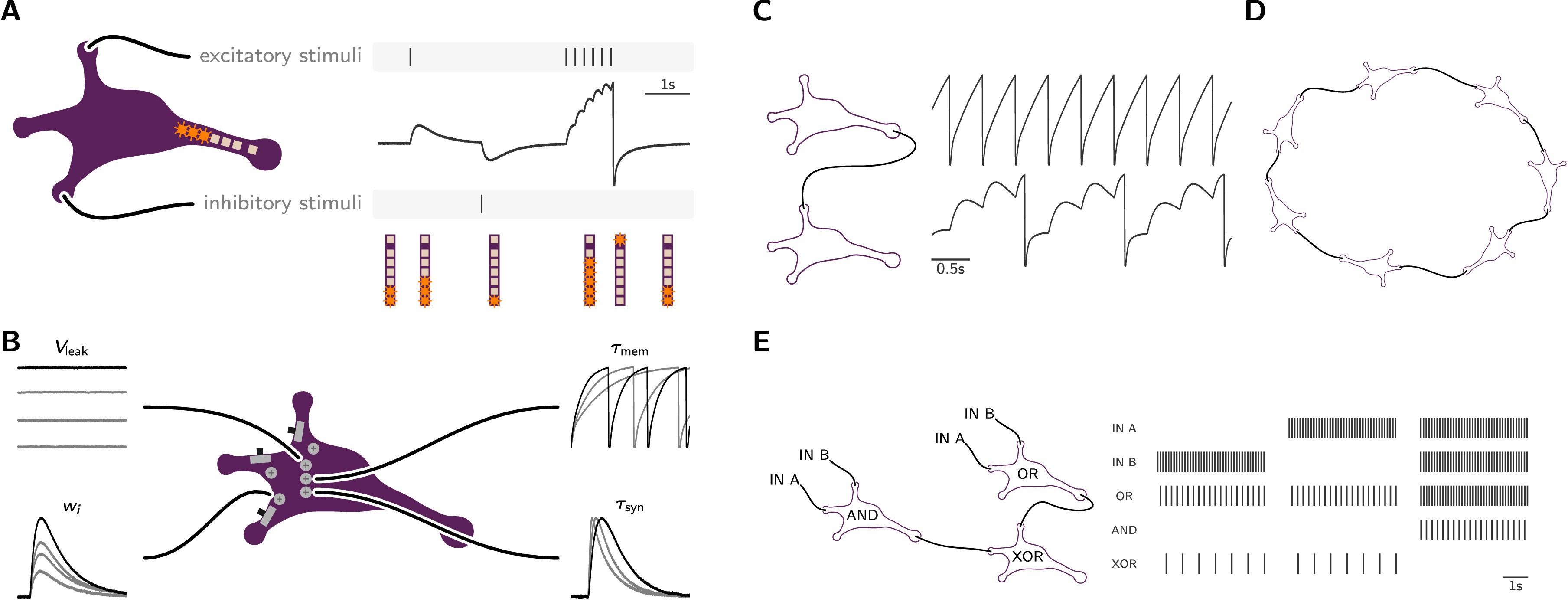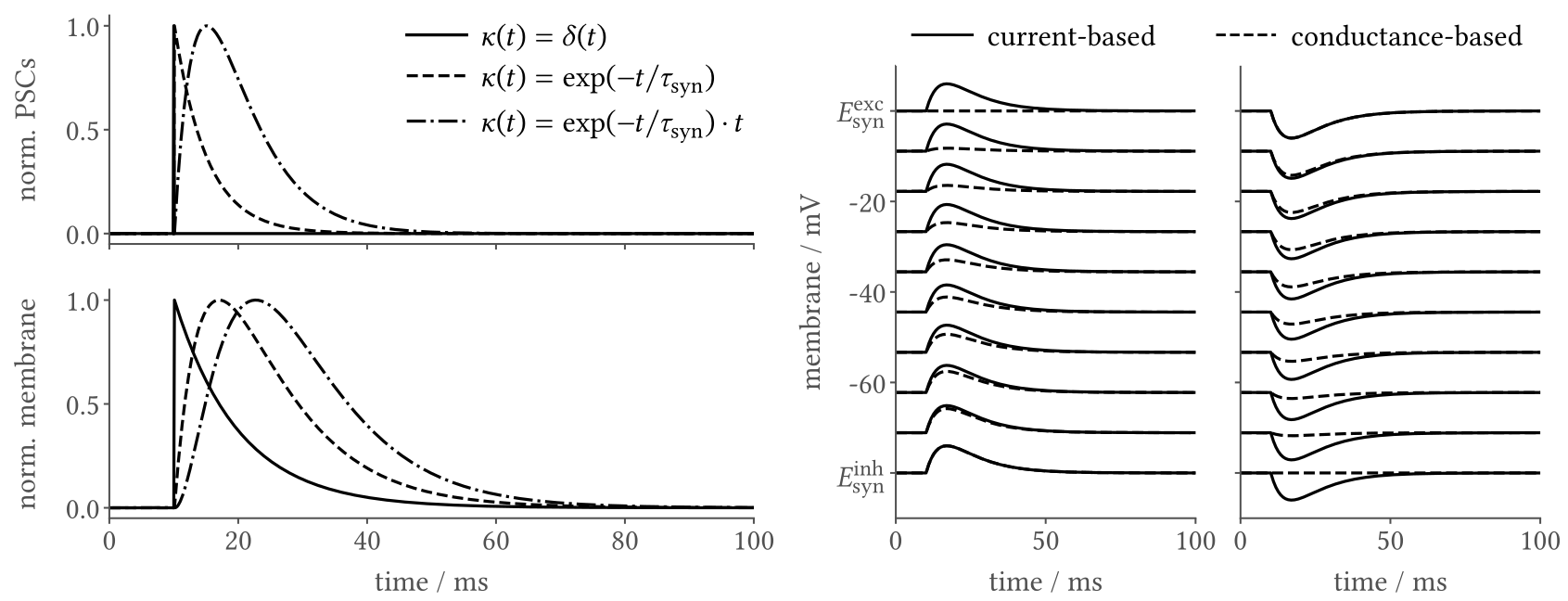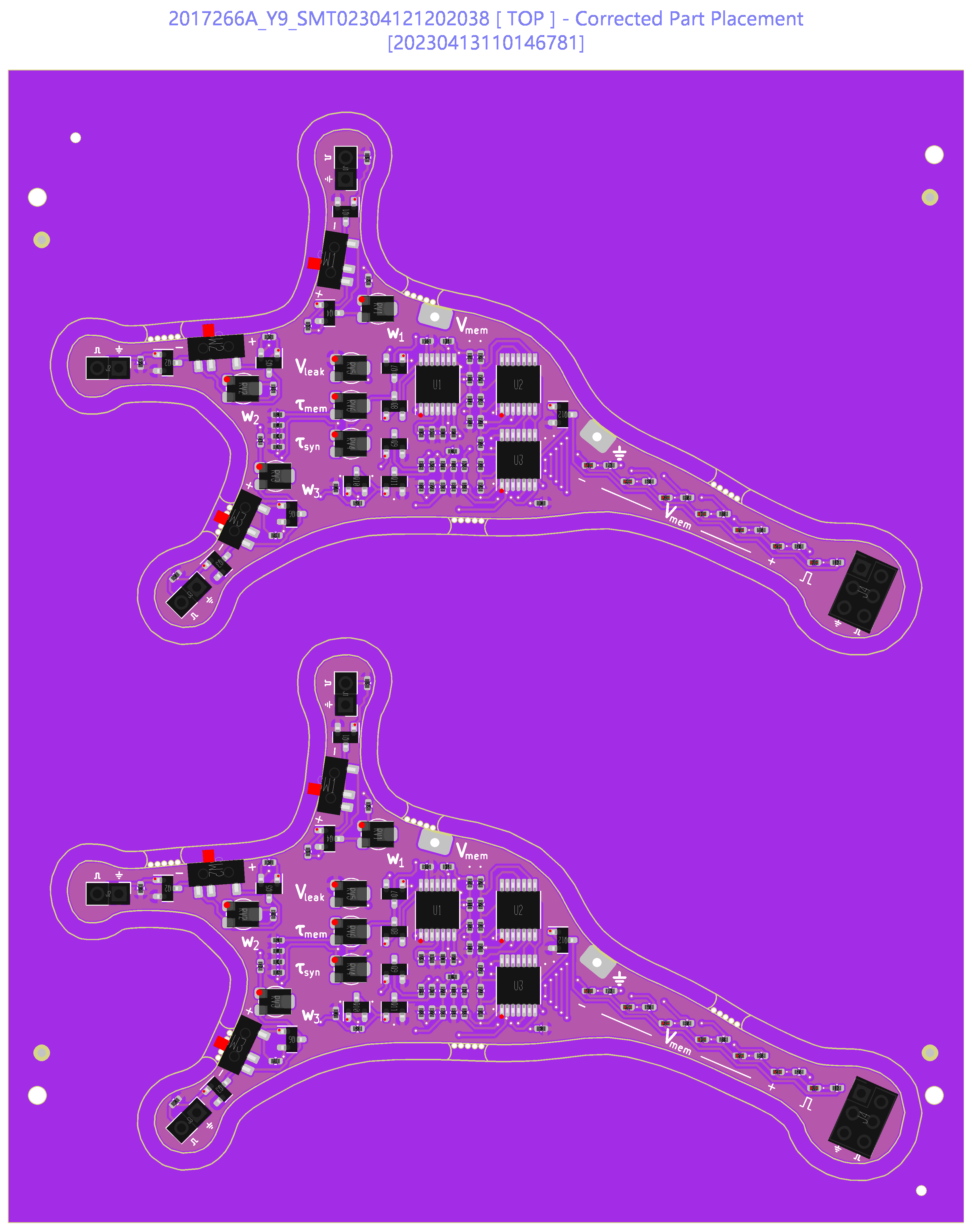-
Paper about the Lu.i neuron published
02/18/2025 at 16:53 • 0 commentsWe are happy to announce that our publication on Lu.i is now available as part of the current issue of "Trends in Neuroscience and Education".
The manuscript contains a detailed circuit description, showcases and application examples from various events. We've also updated end re-organized all schematics – make sure to check out the manuscript and have a look, it's open access under Creative Commons!
https://doi.org/10.1016/j.tine.2025.100248
-
New revision: exponentially decaying synaptic currents
04/25/2023 at 13:24 • 0 commentsSo far, lu.i implemented a rather rudimentary synaptic interaction: While implementing a conductance-based stimulation (https://neuronaldynamics.epfl.ch/online/Ch13.S6.html), the impact of a presynaptic neuron was realized as a short, delta-like pulse, leading to almost step-like increments of the postsynaptic membrane potential.
More realistic synapse models feature more complex interaction kernels to realize, e.g., exponentially decaying synaptic currents
A direct comparison (taken from Billaudelle, 2022) of different interaction kernels showcases these more complex temporal dynamics and their impact on the shape of postsynaptic membrane potentials.

On April 14th, we submitted a new revision of lu.i, now incorporating such exponential synapses. The exponential current is generated by an additional leaky integrator stage with a tunable synaptic timeconstant. The revised version, furthermore, includes switches to configure a synapse to be excitatory or inhibitory (previously realized by swapping the jumper wires).
The updated fabrication files can be found on GitHub. We are currently awaiting delivery of the first batch of the new revision!

-
Arrival of the first batch!
04/25/2023 at 12:56 • 0 commentsWhen the first batch of Lu.i PCBs was delivered in Juli 2022, we were funnily enough spread across the globe and could thus get together only virtually. The PCBs arrived almost fully populated, just the coin cell holder had to be soldered manually.

We had gone all in: Time constraints did not allow for an initial smaller prototype batch, and we had ordered a total of 100 little neurons! Our pre-fabrication verification was thus limited to SPICE simulations. Our limited confidence in those was further reduced by the fact that – with the design being powered by a coin cell – we could only barely honor the specified voltage limits of the used components.

We were super excited when the LEDs immediately lit up – but the circuit appeared somehow broken and reacted unpredictably to us turning the little potentiometers. After some tinkering, we found the first (and only "significant") bug: We had messed up the silkscreen! The markings for the two potentiometers for the membrane timeconstant and the leak potential were swapped🤦 Nothing that we could not fix with a few stickers. One hundred stickers. Well, could have been worse!

Lu.i – educational neuron PCB
Lu.i is an electronic neuron circuit mimicking and illustrating the basic dynamics of real, biological neurons.





